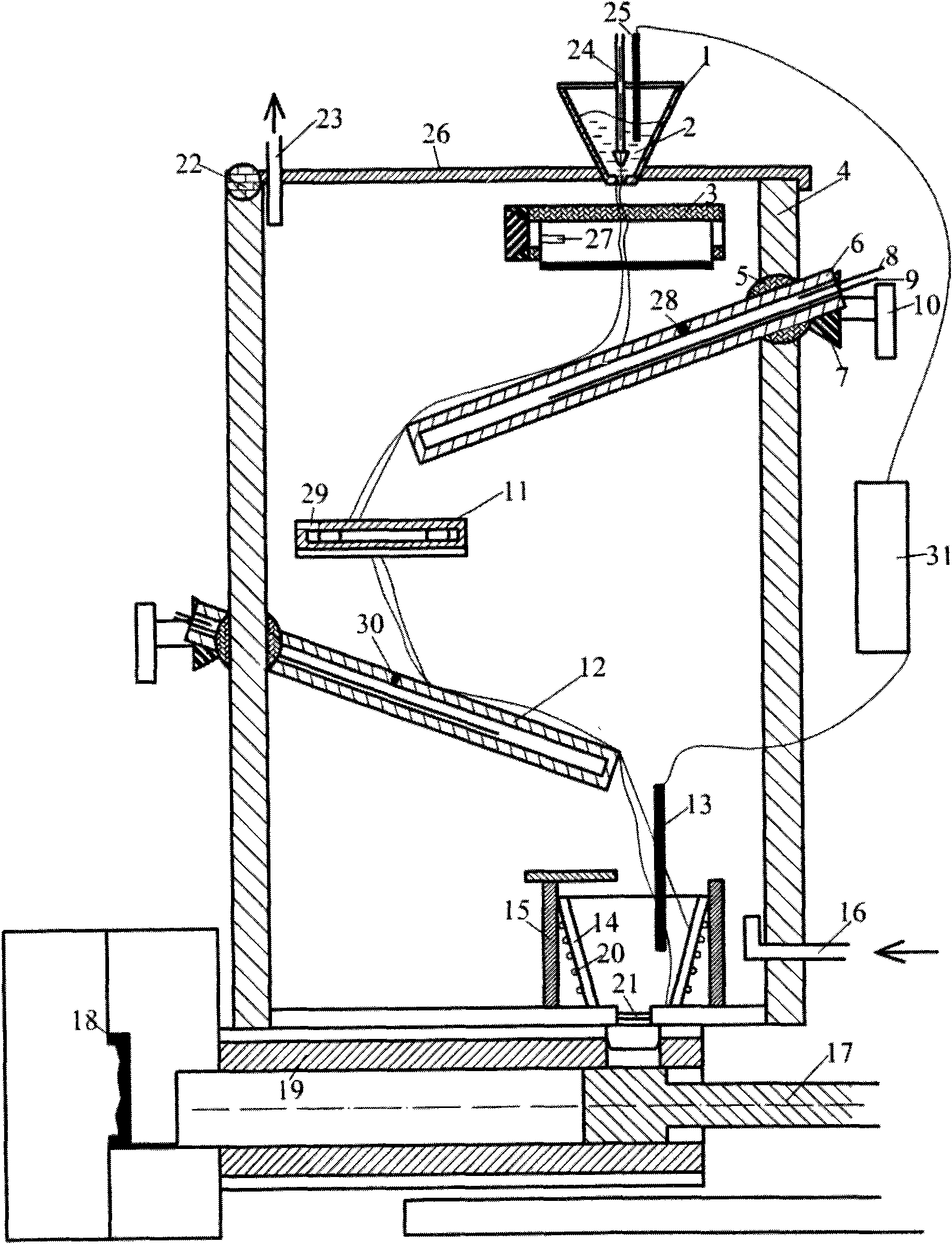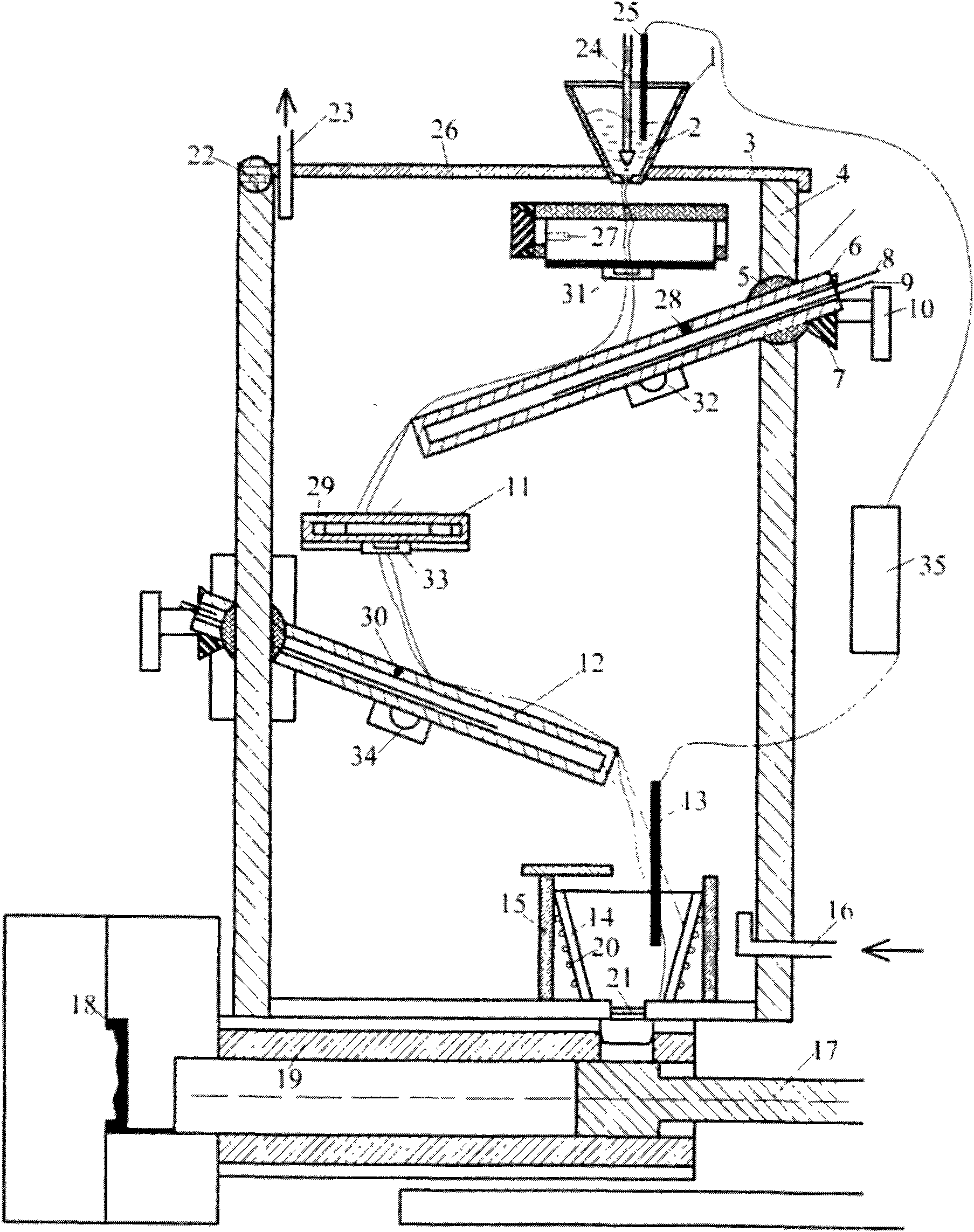Semi-solid rheological molding device for metal part
A semi-solid rheology, metal parts technology, applied in the field of metal processing, can solve the problems of increased control costs, high equipment requirements, difficult application, etc., to improve accuracy and stability, improve melt quality, and simple pulping process Effect
- Summary
- Abstract
- Description
- Claims
- Application Information
AI Technical Summary
Problems solved by technology
Method used
Image
Examples
Embodiment Construction
[0031] Such as figure 1 As shown, the present invention is a semi-solid pulping device with a space box structure. The box body 4 is made of metal with a certain wall thickness, and its shape can be cuboid, cube or cylinder, and its upper end is covered by a box cover 26, and the box cover is connected with the box body 4 through a hinge 22, and can be opened and closed Operation: the lower end of the box body is positioned with the feeding port of the die-casting machine barrel 19 through the position of the movable baffle 21, and the entire box body is placed above the die-casting machine barrel. One side near the case wall on the case cover 26 has a reserved through hole, the size of which is equivalent to the bottom outer diameter of the pouring cup 1, and the pouring cup 1 is placed in this reserved hole of the case cover 26 during work. There is an aperture at the bottom of the pouring cup 1, and the plunger 24 fits closely with the aperture. The inclined cooling plate...
PUM
 Login to View More
Login to View More Abstract
Description
Claims
Application Information
 Login to View More
Login to View More - R&D
- Intellectual Property
- Life Sciences
- Materials
- Tech Scout
- Unparalleled Data Quality
- Higher Quality Content
- 60% Fewer Hallucinations
Browse by: Latest US Patents, China's latest patents, Technical Efficacy Thesaurus, Application Domain, Technology Topic, Popular Technical Reports.
© 2025 PatSnap. All rights reserved.Legal|Privacy policy|Modern Slavery Act Transparency Statement|Sitemap|About US| Contact US: help@patsnap.com


